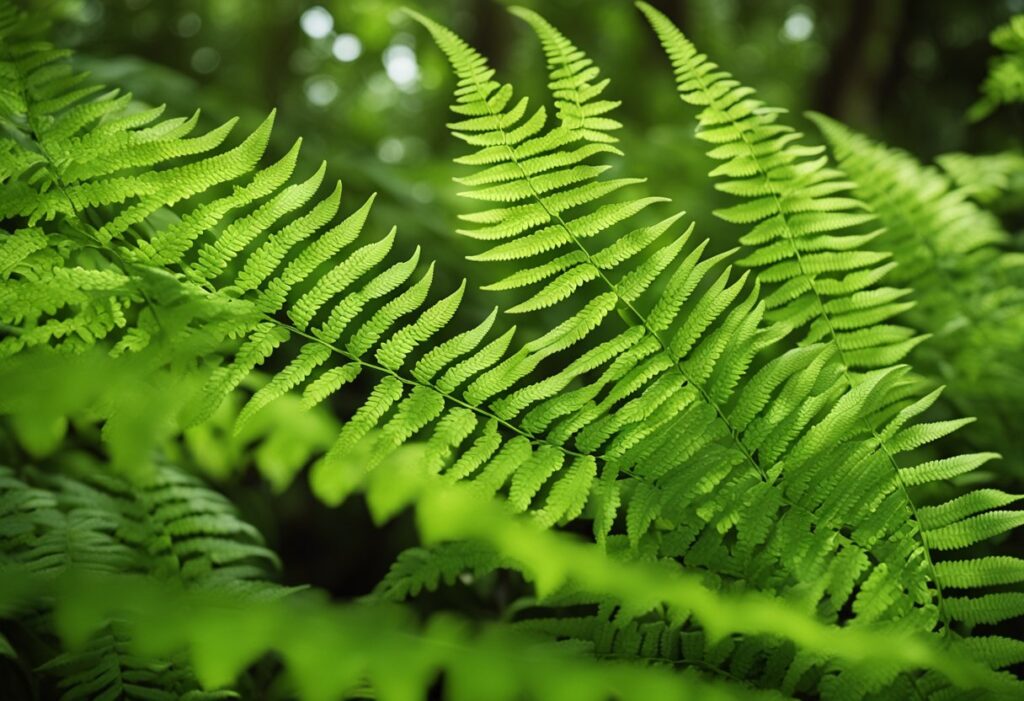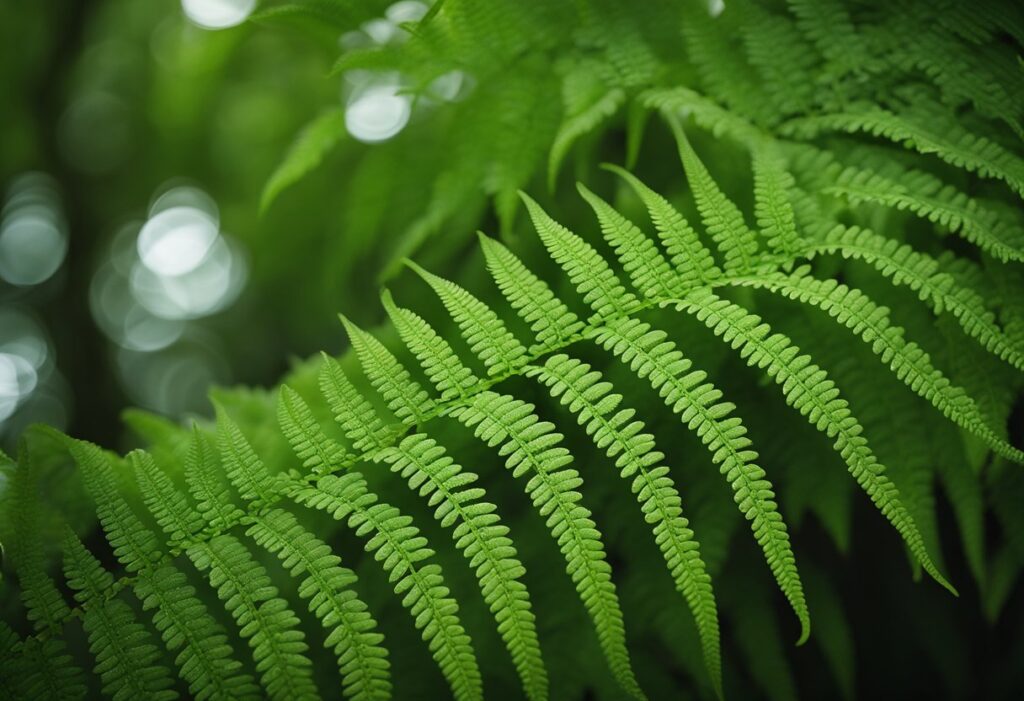Overview of Southern Shield Fern

Thelypteris kunthii, commonly known as the Southern Shield Fern, is a perennial fern species that thrives in shaded areas. Named after German botanist Karl Sigismund Kunth, this fern is characterized by its long, arching fronds that create an attractive ground cover in the right conditions.
Your Southern Shield Fern prefers part to full shade and mesic soils, so it enjoys consistent moisture without waterlogging. Its adaptability makes it resistant to deer and capable of growing in heavy shade, a plus if your garden has limited direct sunlight.
Here’s a quick look at its key features:
- Height and Width: Ranges between 2 to 4 feet in height and spread.
- Leaf Characteristics: Bright green, pinnate leaves with hairs on both surfaces.
- Propagation: This plant can be propagated through root division.
- Soil pH Preferences: It flourishes in the slightly acidic to slightly alkaline range (pH 6.1 – 7.8).
Frequently encountered in the Southeastern United States, particularly west of East Texas, where it’s often called the river fern, the Southern Shield Fern is appreciated for its low-maintenance nature. Whether you’re looking for an easy-care plant for your shaded garden patch or need to fill in spaces with lush greenery, the Southern Shield Fern can be a suitable choice.
Habitat and Distribution

The Southern Shield Fern, Thelypteris kunthii, establishes itself predominantly in the southeastern United States and has a notable presence westward to eastern Texas. Understanding this fern’s habitat preferences and distribution range is vital to appreciate its ecological significance.
Geographic Range
- Southeastern United States: The Southern Shield Fern is extensively throughout this region.
- Westward Reach: Its presence extends to eastern Texas, illustrating a broad adaptability within the range.
Typical Habitats
- Moist Conditions: These ferns favor damp environments, thriving in areas that keep their roots well-hydrated.
- Wooded Areas: You can observe them in forested regions where they receive protection from direct sunlight.
- Shade Tolerance: They are resilient in heavy shade, indicating a capacity to grow under the canopy of dense forests.
Growth and Morphology

When you observe a Southern Shield Fern, you’ll notice its distinctive growth form and structural features, which make it a unique specimen within the fern family.
Leaf Structure
Your Southern Shield Fern, scientifically named Thelypteris kunthii, features long and arching fronds which are bright green in color. Here are some specific traits of its leaves:
- Deciduous: Sheds its leaves annually.
- Arching Growth Form: Creates a visually appealing display.
- Leaf Surface: Hairy on upper and lower surfaces with a hirsute midvein on the upper side.
- Pinnate Leaves are compound leaves with leaflets on either side of the stem resembling a feather.
The dense and triangular leaf pattern provides a full, lush appearance. Each frond grows from a common root ball, contributing to the fern’s clumping habit.
Reproductive Features
Southern Shield Fern reproduces through spores rather than seeds, like other ferns. General reproductive features include:
- Sori: Collections of spores found on the underside of the fronds.
- Indusium: A thin layer of tissue covering the sori protects the spores until they mature.
- Non-flowering: It does not produce flowers or seeds.
This fern’s reproductive cycle includes a spore-producing phase and a separate gametophyte stage where fertilization occurs. Remember that environmental conditions such as moisture and light can influence spore germination and the growth of new fern plants.
Conservation Status

Your interest in the conservation status of the Southern Shield Fern (Thelypteris kunthii) is essential for its preservation and understanding of its place in the ecosystem. The conservation status of a species indicates how likely it is to remain alive at present or in the near future.
The Southern Shield Fern is not listed as a threatened or endangered species. The fern is relatively widespread in its habitat, which stretches across the southeastern United States. Given this distribution, it has been assessed by various conservation organizations and found stable in most of its range. However, you should be aware that conservation status can vary regionally and is subject to change with environmental pressures.
In terms of protection efforts, it’s important for you to note:
- Habitat Conservation: The preservation of the fern’s natural habitats is crucial. Wetlands and wooded areas, where it thrives, must be maintained to ensure its continued survival.
- Invasive Species Control: Controlling invasive species that compete with the Southern Shield Fern for resources is vital.
- Environmental Monitoring: Changes in climate or land use can impact the fern. Regular monitoring can help detect and mitigate potential threats.
Cultivation and Uses

Southern Shield Fern, classified as Thelypteris kunthii, thrives in shaded areas and is favored for its minimal maintenance requirements. Its lush, arching fronds make it popular for enhancing woodland gardens or shaded landscapes.
Landscape Applications
You can integrate Southern Shield Fern into your garden as a low-maintenance groundcover, especially in shaded areas. Its long, bright green fronds with a pinnate leaf structure create a visually appealing texture. This fern pairs well with other shade-loving plants and is an excellent addition to:
- Woodland gardens
- Shade gardens
- Naturalized areas
- Along stream banks
Benefits for your landscape:
- Provides lush greenery even in full to partial shade.
- Deer resistant, making it practical for areas with wildlife presence.
Propagation Methods
Southern Shield Fern propagation is generally achieved through root division. Here’s how you can propagate it:
- Choose the right time: Early spring or fall is ideal, when the plant is not in active growth.
- Divide carefully: Dig up the fern, ensuring you have a section with roots attached.
- Replant immediately: Place the divided section in a shaded area and water thoroughly.
Key points in propagation:
- Maintain soil moisture after planting until the new fern is established.
- Soil should be well-drained, fertile, and rich in organic matter.
Frequently Asked Questions

This section covers some common questions about the care and characteristics of Southern Shield Ferns.
What are the optimal lighting conditions for Southern Shield Ferns?
Southern Shield Ferns thrive best in shaded to partially shaded areas. They favour environments that mimic their natural understory habitat, where sunlight is filtered through the foliage above.
How can I propagate Southern Shield Ferns effectively?
You can propagate Southern Shield Ferns by dividing the rhizomes. This should be done in the spring, carefully separating the rhizome segments and planting them in a moist soil mixture.
What are the distinguishing features of Southern Shield Fern compared to Southern Wood Fern?
The Southern Shield Fern typically has fronds that arch more distinctly and can grow taller than Southern Wood Fern. The fronds are also more spaced out, making the plant airy.
What are the care instructions for a Southern Shield Fern kept indoors?
Keep your indoor Southern Shield Fern in a spot with indirect light and high humidity. Ensure the soil stays consistently moist but not waterlogged. Remove old fronds to promote new growth.
Can Southern Shield Ferns adapt to outdoor garden environments?
Yes, Southern Shield Ferns can adapt well to outdoor gardens. They prefer moist, rich soils and can tolerate heavy shade. Outdoors, they are resilient and can endure less-than-ideal drainage conditions.
How do Southern Shield Ferns proliferate, and do they spread quickly?
Southern Shield Ferns proliferate through their rhizomes. They can spread at a moderate rate. They will form dense clumps that gradually expand in favorable conditions but are not known for aggressive spread.










